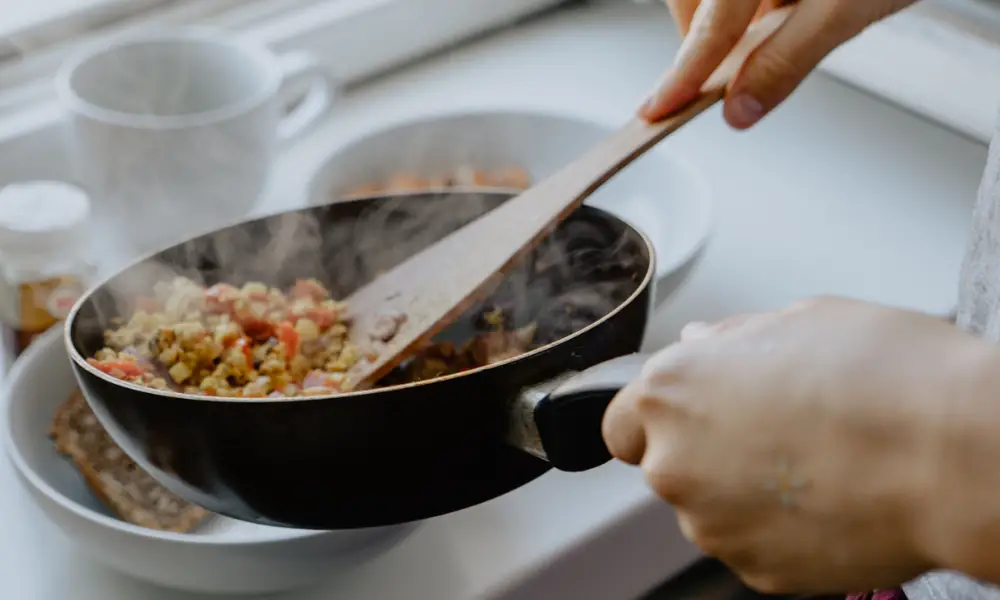Revive and Savor: Master the Art of Food Reheating
Are you tired of lackluster reheated meals that leave you craving the freshness of a newly cooked dish? Look no further, as we bring you the ultimate guide to mastering the art of food reheating. In this article, we will explore the importance of proper reheating techniques and how they can make a world of difference to your culinary experiences.
We all lead busy lives, and reheating food has become a common practice in many households. However, it is crucial to understand that not all reheating methods are created equal. Improper reheating can result in dry, overcooked meals or even worse, foodborne illnesses. That’s where our trusted company comes in to offer you expert guidance on how to properly reheat food that has been refrigerated or frozen.
With our years of experience in the realm of food, recipes, cooking, and nutrition, we have perfected the art of bringing life back into your leftovers. By following our carefully crafted instructions, you will be able to revive the flavors and textures of your favorite dishes, ensuring that every bite is as delightful as the first time you enjoyed them.
Join us on this journey as we uncover the secrets to achieving perfect reheating results, providing you with the knowledge and confidence to elevate your meals to new heights. Say goodbye to soggy microwaved pizzas and tasteless leftovers. Get ready to impress your taste buds and those of your loved ones, as we embark on an exciting exploration of the world of food reheating. Let’s revive and savor the true essence of your meals, one reheated dish at a time.
Understanding the Basics of Food Reheating
Reheating food is a common practice that allows us to enjoy leftovers or meals that have been stored in the refrigerator or freezer. By following proper techniques, we can ensure that reheated food not only retains its taste and texture but also remains safe to consume. In this section, we will delve into the basics of food reheating, providing you with essential knowledge to master this art.
-
Temperature and Timing: When reheating food, it is important to consider the optimal temperature and timing. Different types of food require different reheating methods to retain their flavors and avoid overcooking. For example, delicate items like pasta or rice are best reheated gently, while proteins like meat or poultry may require higher temperatures to ensure thorough heating. Paying attention to recommended cooking times will prevent undercooking or overheating, keeping your meal delicious and safe to eat.
-
Proper Containers: The choice of containers for reheating also plays a crucial role. It is recommended to use microwave-safe glass or ceramic containers, as they heat food more evenly and pose fewer risks of leaching harmful substances into your meal. Avoid using plastic containers, especially those not labeled as microwave-safe, to prevent chemicals from potentially contaminating your food. Furthermore, ensure that the containers have tightly fitting lids to preserve moisture and prevent the food from drying out during reheating.
-
Suitable Methods: There are various methods available for reheating food, depending on the type of meal and equipment you have on hand. While the microwave is a popular and convenient option, other methods like stovetop reheating or utilizing a steam oven can yield excellent results as well. It is important to choose the appropriate method based on the dish at hand, as some may benefit from gentle heating, while others may require a higher intensity to restore their original flavors.
By understanding these basic principles of food reheating, you can ensure not only the revival of your leftover meals but also optimum taste and safety. In the following sections, we will explore specific recipes and techniques to enhance your reheating skills, empowering you to make the most out of your dishes while minimizing food waste. Stay tuned!
Best Techniques for Reheating Different Food Types
When it comes to reheating different types of food, it’s important to know the best techniques to retain their flavors and textures. Whether you’re warming up leftovers or bringing frozen meals back to life, here are some tips to make your reheated dishes taste just as delicious as the first time around.
-
Soups and Stews: To reheat soups or stews, it’s best to do so on the stovetop. Place the desired amount in a pot and heat it over low to medium heat. Stir occasionally to ensure even heating. Avoid bringing the liquid to a boil, as this can overcook the ingredients and result in a loss of flavor. If the soup appears too thick, you can add a small amount of broth or water to thin it out.
-
Pasta and Rice Dishes: For reheating pasta and rice dishes, using the microwave can be a convenient option. Place the desired amount in a microwave-safe dish and cover it loosely with a microwave-safe lid or microwave-safe plastic wrap. Microwaving on medium power for short intervals, stopping to stir in between, helps to ensure even heating. This method prevents the dish from becoming dry or overly mushy.
-
Meats and Seafood: Reheating meats and seafood can be trickier, as overcooking can lead to tough and dry textures. The best way to reheat these dishes is usually in the oven or on the stovetop. Preheat the oven to a low temperature, around 275°F (135°C), and place the meat or seafood in an oven-safe dish. Cover the dish with foil to retain moisture and heat until the internal temperature reaches a safe level. Using a meat thermometer can help ensure that the food reaches the proper temperature without overcooking.
Remember, reheating times may vary depending on the portion sizes and the specific food item. It’s always a good idea to keep a close eye on the food while reheating to prevent it from becoming overdone or dried out. By using these techniques, you can bring back the flavors of your favorite dishes and enjoy them once again.
Stay tuned for the next section of our article where we’ll explore the importance of proper storage and reheating for maintaining optimal nutrition in reheated meals.
Safety Guidelines for Reheating Food
-
Temperature is key:
When reheating food, it is essential to make sure it reaches the proper temperature throughout. This is especially important for meats, poultry, and seafood, as they can harbor harmful bacteria that need to be eliminated. To ensure food safety, use a food thermometer to check the internal temperature. Reheated leftovers should reach at least 165°F (74°C) to destroy any potential pathogens. -
Thawing properly:
If reheating frozen food, it is crucial to thaw it correctly beforehand. Never defrost food at room temperature, as this can promote bacterial growth. The safest methods for thawing are using the refrigerator, cold water, or the microwave. Remember to divide large portions into smaller ones to speed up the thawing process and ensure even reheating later on. -
Reheat only what you need:
To maintain optimal food quality and minimize waste, it is best to reheat only the portion you intend to consume. Repeatedly reheating and cooling leftovers can increase the risk of bacterial contamination. By reheating what you need and saving the rest for later, you can reduce the chances of foodborne illnesses and enjoy the flavors and textures of freshly reheated food.
Follow these safety guidelines when reheating your meals to preserve both the taste and nutritional value of your food, while also prioritizing your health and well-being. By mastering the art of food reheating, you can indulge in delicious meals even when time is limited.


